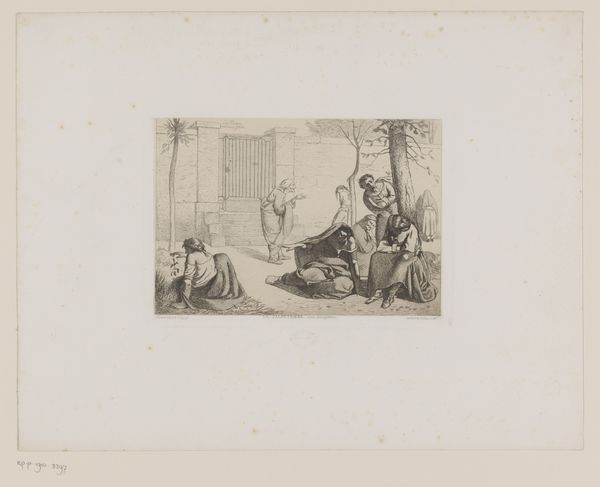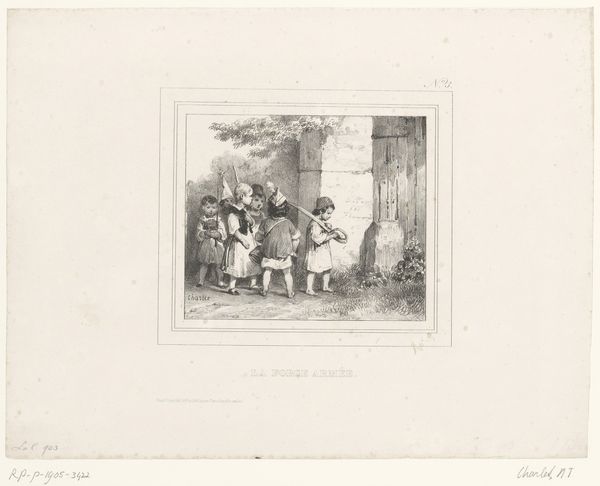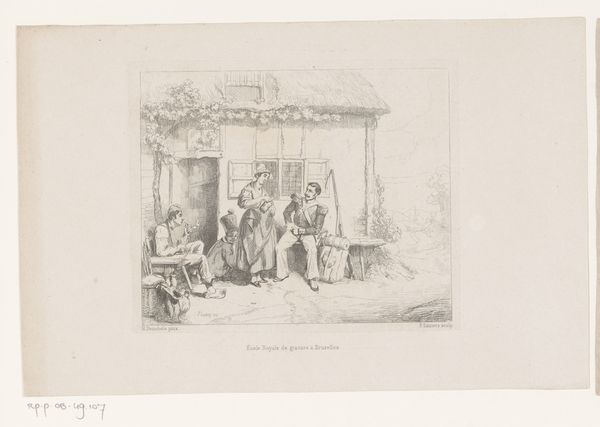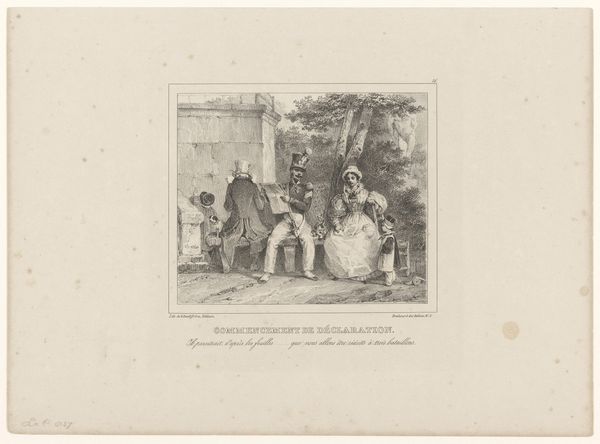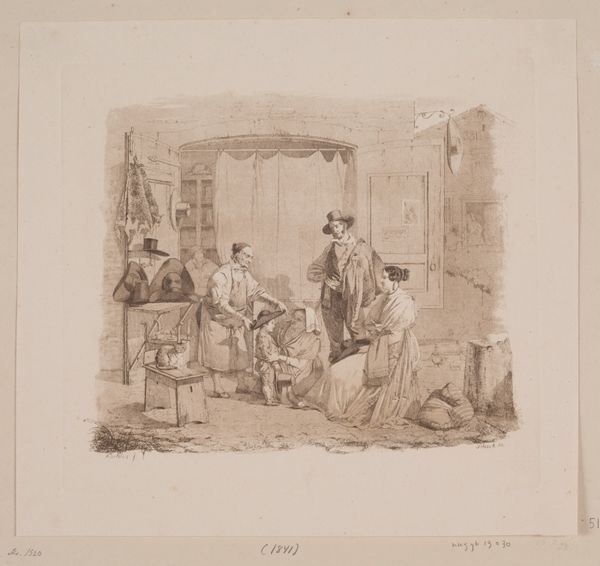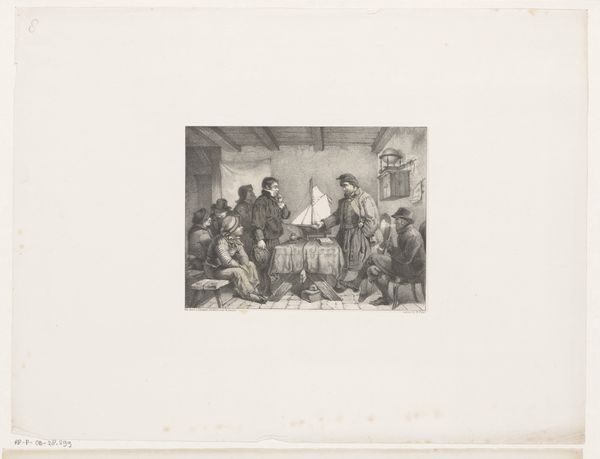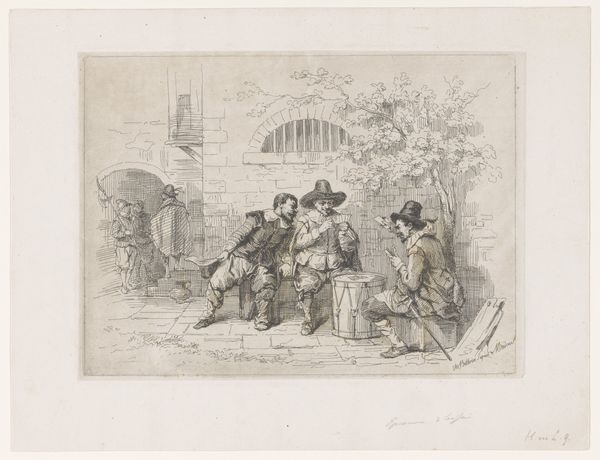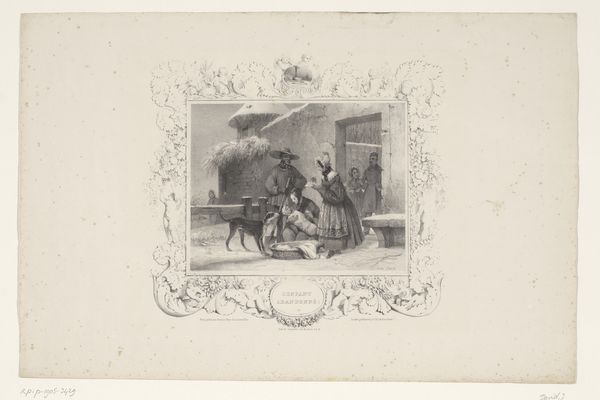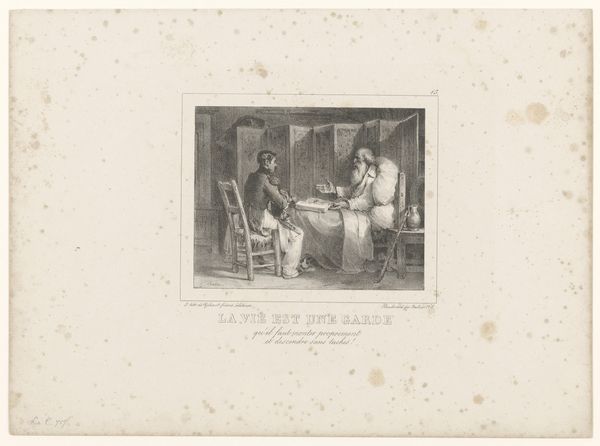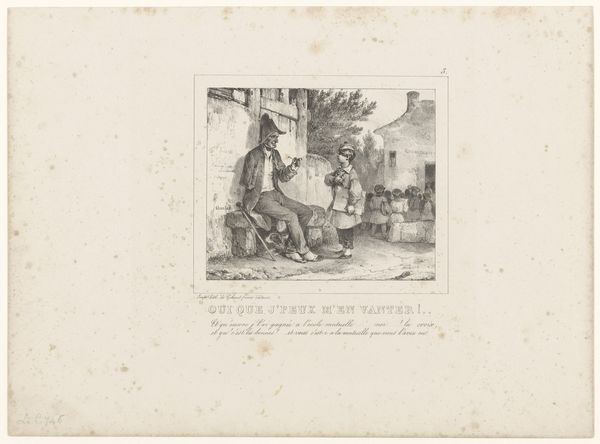
drawing, print, etching, paper, ink
#
drawing
#
narrative-art
# print
#
etching
#
caricature
#
figuration
#
paper
#
ink
#
romanticism
#
line
#
genre-painting
Dimensions: height 192 mm, width 242 mm
Copyright: Rijks Museum: Open Domain
Editor: So this is "Drie oude dronkaards bij een krot", or "Three Old Drunkards by a Hut", an etching by Nicolas Toussaint Charlet from 1837. It’s rendered so delicately; I'm curious about the way he portrays, maybe even romanticizes, this scene of apparent inebriation and poverty. What stands out to you most about this print? Curator: For me, it's the clear connection Charlet makes between the figures' state and their material conditions. Notice how the etching technique itself, with its delicate lines and gradations, almost glamorizes the poverty, yet the subject is a critique of working class realities, specifically alcoholism as a response to harsh labor and societal precarity. How do the depicted materials of the hut, the clothing, and even the alcohol contribute to the narrative? Editor: I see what you mean. It's not just a straightforward depiction of drunkards. The crumbling hut and tattered clothes speak volumes about their socio-economic circumstances. But is the act of etching also significant in understanding the work’s social impact at the time? Curator: Absolutely. Etchings, as a relatively accessible printmaking medium, allowed for broader distribution and consumption of such imagery. Think about how the availability of this print – a *multiple* – allows Charlet to both participate in and comment upon the economic realities of 19th-century France. Was he part of the critique or just documenting it? Consider how the production and consumption of alcohol parallel the creation and distribution of this image. Editor: So, the choice of etching directly connects to the social commentary, making the artwork itself part of the system it critiques. I hadn't considered the medium as actively contributing to the message in that way. Curator: Exactly. Thinking about art through the lens of its material production and distribution gives us a richer understanding of its social impact. It urges us to look beyond aesthetics and engage with the economic realities that shaped both the artwork and its subject matter. Editor: That’s definitely shifted my perspective. I’m starting to see how materials and production are central to understanding art’s relationship to society. Thanks!
Comments
No comments
Be the first to comment and join the conversation on the ultimate creative platform.
